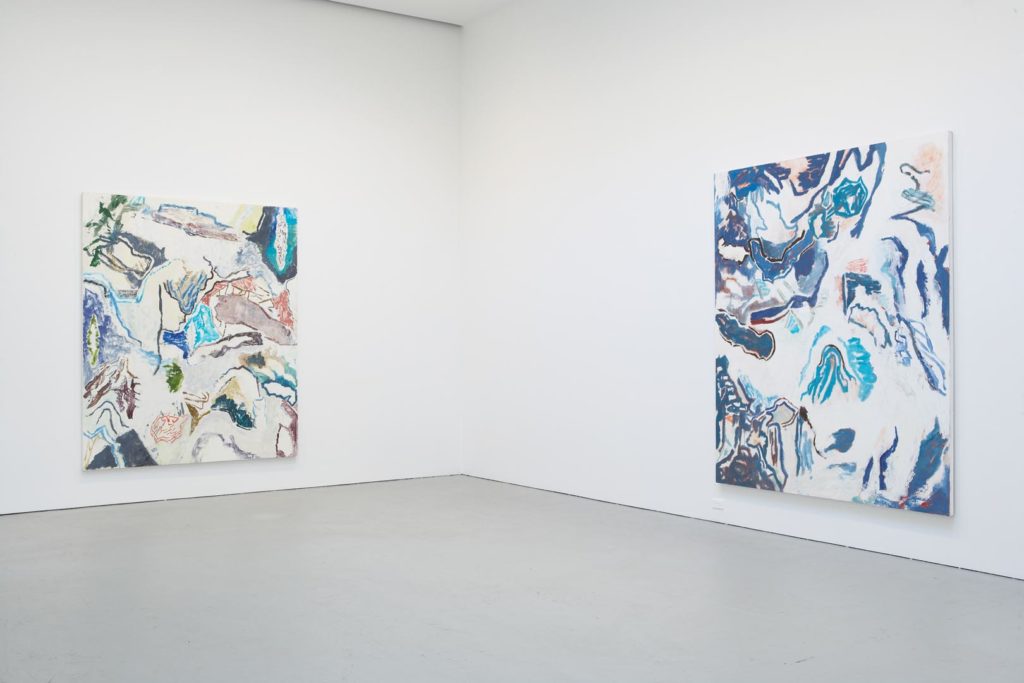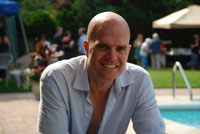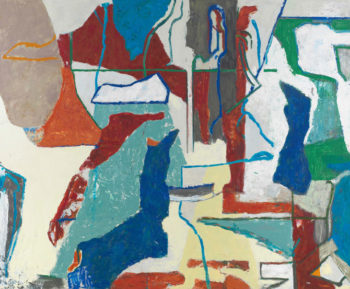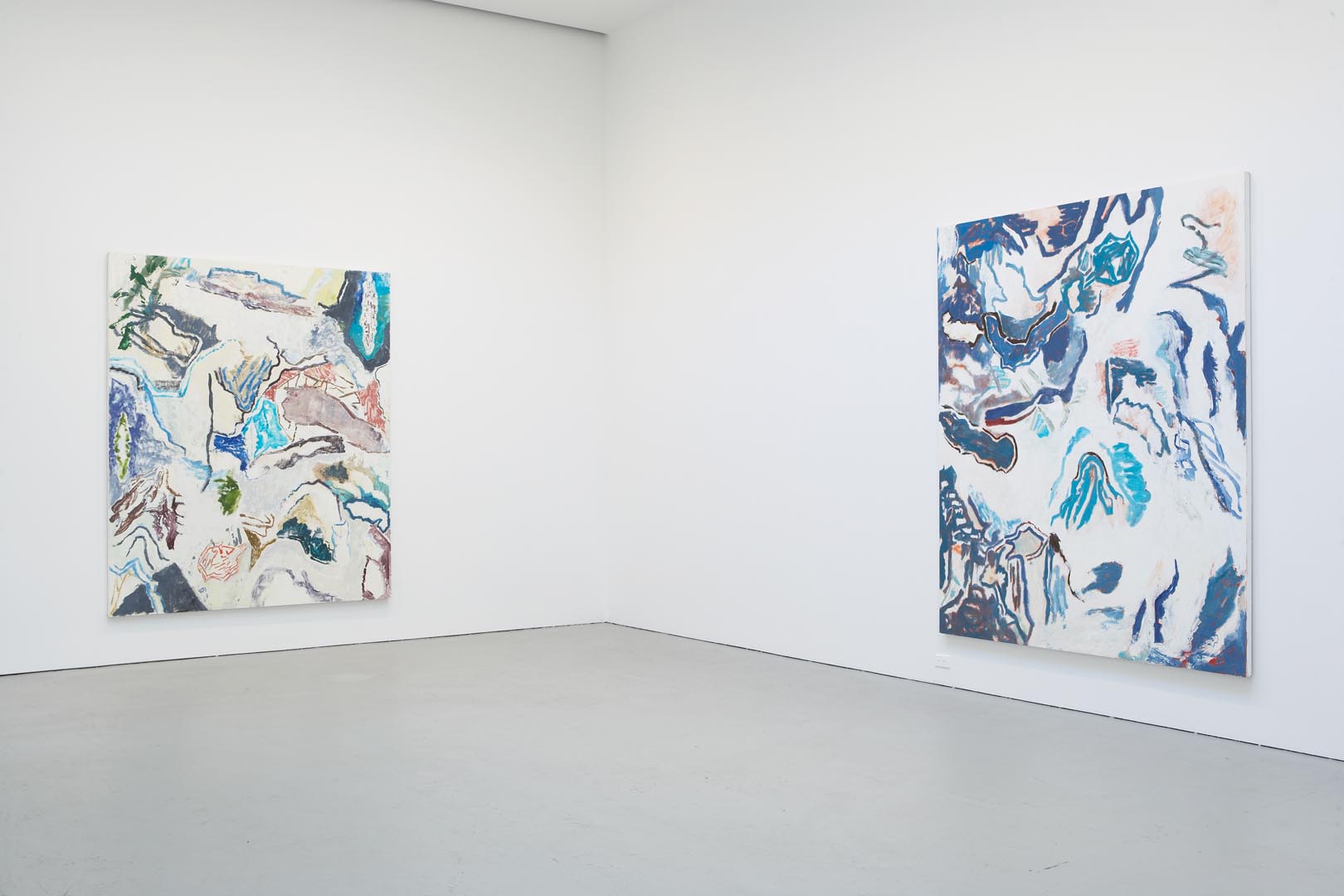[ad_1]

Installation view of works by Bloodgood at David Zwirner in New York in 2008.
COURTESY DAVID ZWIRNER
Paul Bloodgood, an artist, teacher, and experimentally minded gallery owner who continued to make art after suffering a traumatic brain injury in 2010, died on Friday from early onset Alzheimer’s disease. He was 58.
A painter’s painter, Bloodgood made abstract pieces that fracture and layer space with an offhand sophistication. They allude to Clyfford Still’s craggy patches of color, Brice Marden’s idiosyncratic lines, and Hans Hofmann and Joan Mitchell’s sparer and scrappier canvases.
“My paintings take landscape as their subject and as a conceptual point of departure,” Bloodgood said in a statement that accompanied the announcement of his Guggenheim Fellowship in 2009. He explained that he often began by making preparatory collages “out of parts and details taken from other landscape painters as well as from photographs and drawings I’ve made around the Mt. Katahdin region of Maine,” and he mentioned Pollock, Cézanne, and Ming Dynasty–era painter Tung Ch’i-Ch’ang as important influences.

Bloodgood.
COURTESY SAATCHI GALLERY
Over the course of his career, Bloodgood had one-person shows in New York with Daniel Newburg (in 1990), Sandra Gering (1993 and 1995), Gavin Brown’s Enterprise (1995), 303 Gallery (1996), and Newman Popiashvili Gallery (2010 and 2012), as well as in San Francisco, Munich, Washington, D.C., and elsewhere.
One of those indefatigable art types who refuse to be limited to a single role, Bloodgood began organizing shows in 1991 in a spare room at Art Crate, the New York art-moving company where he then worked, under the name AC Project Room. He worked on those exhibitions with Alissa Friedman, who was then an art history graduate student, and who is now a director at Salon 94. The space later moved to a space on Broome Street in SoHo, and among the artists that it showed were Isa Genzken, Byron Kim, Doug Aitken, Fionna Banner, and Jane and Louise Wilson.
Bloodgood was born in Nyack, New York, in 1960, graduated from Yale University in 1982, and then spent four years living in rural Maine and New Hampshire before moving to Manhattan in 1986. AC Project Room ran for more than a decade, closing in 2001. In 2002, he married Kelly Adams and earned an M.F.A. from the Maine College of Art. He taught at Rutgers University, Cooper Union, Bennington College, and other institutions.
In 2003, he noted in his Guggenheim statement, he developed “a 350-color interior house paint palette, based on Paul Klee’s color systems developed at the Bauhaus” for Martha Stewart Omni Media, where he was then working, and those colors were sold at Loews stores across the United States. In 2007, he was picked for the White Columns Annual in New York by curator and art adviser Clarissa Dalrymple. The following year he appeared in a three-person show at David Zwirner in New York.

Paul Bloodgood, Thing Language, 2010.
COURTESY THE ARTIST AND NEWMAN POPIASHVILI GALLERY
In the fall of 2010, Bloodgood received a brain injury as a result of a mugging that brought on the effects of Alzheimer’s disease and “rendered him unable to infer the entirety of an object from a fractional view,” as the critic Michael Wilson wrote in a Time Out New York review of his widely lauded 2012 show at New York’s Newman Popiashvili Gallery, which included pieces made both before and after his injury.
Bloodgood nevertheless kept working, painting pieces that continued to inventively explore how perspective, and paintings themselves, can be constructed, and making collages by cannily piecing together pieces and photographs of his earlier work. “Although he became increasingly aphasic and required assistance for daily living, painting was the last independent thing he could do,” Adams said in an email. “His drive to paint was stronger than his drive to put food in his mouth. He painted until he became bed-bound in August 2017.” He is survived by Adams and two children, Able and Castle Bloodgood. In June, White Columns will present a solo show of his work, which was planned before his passing.
“I’ve come to the realization that a landscape is part of a larger energetic system; that it is not constant in form, structure or proportion; and that any attempts to capture both the rough topography and the sensorial experience of landscape in painting must include an active human presence,” Bloodgood said in his Guggenheim statement. “The essential reality of nature is not separating, self-contained, and complete in itself. Rather, nature’s unfolding truth emerges only with the active participation of the human mind.”
Update, May 11: The attribution for the quotation in the penultimate paragraph has been corrected.
[ad_2]
Source link

